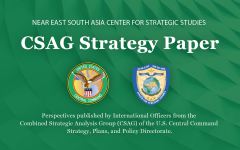Fast-Paced Diplomatic Effort to Jump Start Afghanistan Peace Process
March 16, 2021 2021-03-16 22:41Fast-Paced Diplomatic Effort to Jump Start Afghanistan Peace Process
Fast-Paced Diplomatic Effort to Jump Start Afghanistan Peace Process
by NESA Professor Ali Jalali
15 March 2021
Amid a renewed global push to end the long conflict in Afghanistan, key regional powers show support for a US plan to accelerate regional cooperation, and invigorate intra-Afghan talks on a negotiated settlement in Afghanistan. This comes in response to U.S. Secretary of State Antony Blinken’s letter last week calling on the Afghan government, political leaders, and the Taliban to hold talks within weeks in Turkey to seal a peace deal with the Taliban on a new participatory government in Afghanistan. The United States has shared a draft peace plan for replacing Afghanistan’s government with a power-sharing interim administration pending elections under a new constitution.
Responding to the new US initiative, Turkey announced on Friday, 12 March that it will host the Afghan peace talks in Istanbul next month. Turkey states that both the Afghan Government and the Taliban have asked Turkey to host such a meeting. Without replacing the ongoing Doha negotiations, the consultations in Turkey are aimed at reinvigorating the Doha peace process.
In a similar move, Russia reacted positively to the U.S. plan and has seconded the call for an inclusive interim administration in Afghanistan with inclusion of the Taliban. As a step toward facilitating regional consensus, Russia is invoking the so-called Troika-plus plan that brings together representatives of the U.S., Russia, China, Pakistan, Iran, and India to agree on and support a peace settlement in Afghanistan. Last week, Moscow announced that it has invited the United States, China, Pakistan, representatives of the Afghan government and the Taliban group, as well as Afghan political figures, to Moscow for March 18 consultations on a peaceful settlement in Afghanistan. Moscow reported that U.S. Special Envoy Zalmay Khalilzad will represent the United States.
Analysis
Why Now? For years, the international community has been promoting an Afghan-owned and Afghan-led peace process to end the long war in Afghanistan. The February 2020 US-Taliban peace agreement was just a means to facilitate such an intra-Afghan dialogue that would pave the way for the US to end its never-ending war in Afghanistan. However, the process failed to meet the expectations – the intra-Afghan talks have not earnestly started while the deadline for US withdrawal (May 2021) approaches.
It is under such complex conditions that the United States Government has launched a new initiative to jump start the stagnant peace process. The Key elements in the U.S. plan now are a) a regional approach, with a significant management role for the United Nations – to bring a regional consensus in support of a faster resolution of the Afghan conflict and b) proposing a peace plan to the Afghan sides to discuss and agree on power-sharing transitional arrangements that lead to peace.
The U.S. draft peace plan and prospects for its implementation
The U.S. draft blueprint includes three key elements:
- Guiding principles for Afghanistan’s future,
- The structure of a transitional participatory government, and
- A political roadmap for a lasting ceasefire
The draft underlines Islam as the official religion of the country and calls for drafting a new constitution which should protect the rights of women and children. The interim arrangement shall have separate branches of government: the executive branch headed by a head of state; the parliament, including the integration of Taliban representatives; and the judiciary, including an independent high council for Islamic jurisprudence, to vet all laws and government decisions and their accordance to the Islamic principles.
The draft states that when the term of a proposed transitional government ends, the future leader of Afghanistan will be elected through a popular vote.
Initial reaction of the Afghan government to the US proposed plan has been mixed. While some of the Ghani Government members sounded defiant, positive reactions of some Afghan political leaders and civil society has softened the Ghani administration’s stance. The government agreed to participate in Turkey and Moscow parleys. The Taliban has not rejected the plan, but refused to take a position pending reviewal of the proposal.
It is expected that the intra-Afghan negotiation over the US plan will be tough, lengthy, and subject to the level of pressure from other stakeholders, particularly the United States and Pakistan.
The Challenges
As the process proceeds, the deadline for the withdrawal of US troops from Afghanistan may have to be delayed only to constitute favorable conditions for the progress in peace talks and not as an open-ended extension. A rash decision on troop withdrawal can increase the chances of failure of the intra-Afghan talks since it will favor the Taliban and disfavor the Kabul government. The Afghan government continues to rely on the support of the remaining 2,500 US and thousands of NATO troops in the country, as well as the crucial assistance of some 18,000 American contractors who help in providing 100% of maintenance and service to the Afghan Black Hawk helicopters and C-130 aircraft. The contractors also manage the essential supply chain of the ANDSF while US Combat aircraft run bombing missions against the Taliban and Daesh attacks. Furthermore, the ANDSF benefits from training and intelligence support provided by the international forces.
The Outlook
These are so many activities taking place in a short time and under complicated conditions. Failure of the effort may force Washington to look for other options, none of which promise the end of the war in Afghanistan in the foreseeable future.
The views presented in this article are those of the speaker or author and do not necessarily represent the views of DoD or its components.







